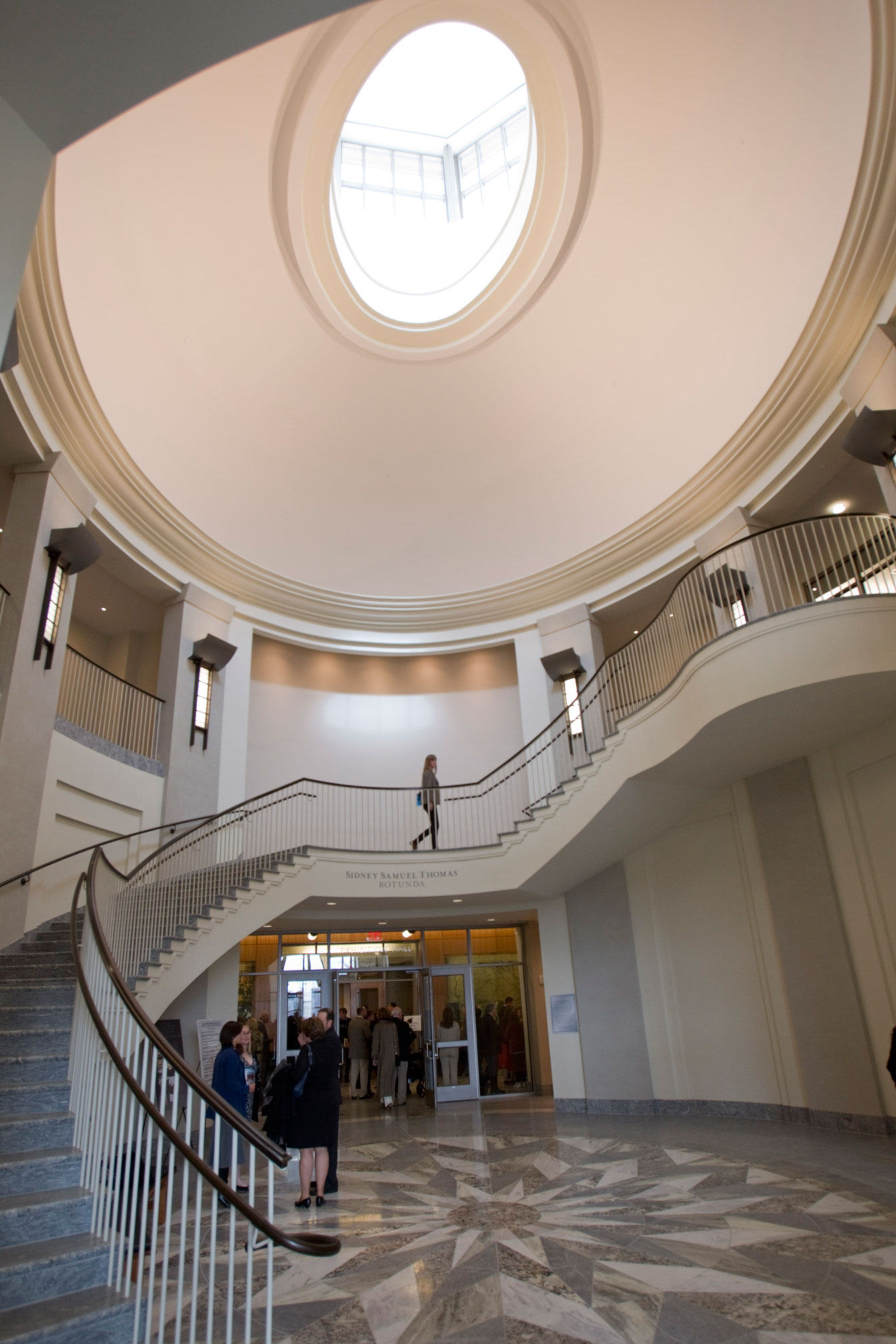The day when many of the state’s riches became truly accessible to the public was celebrated Feb. 17 with the dedication of the Richard B. Russell Building Special Collections Libraries.
Holding thousands of artifacts, many one of a kind, representing Georgia’s history and culture, the new facility combines archival and research functions with galleries for both permanent and rotating exhibits of the collections.
“It is the state’s library and the state’s collections, dedicated here to the benefit of the state’s people,” said keynote speaker Larry Walker, a member of the University System of Georgia Board of Regents and former legislator. “The Russell Library is just one more way the land-grant mission permeates this campus.”
The abundance and breadth of the collections astonished those attending the ceremonies: from visual and written depictions of Georgia as a colony to unedited news film from WSB-TV and WALB-TV, covering some of the most tumultuous times in modern state and national history, to studies of the political process using hundreds of artifacts from participants in public life to stunning renderings of flora and fauna to field recordings of folk music donated by local practitioner and documentarian Art Rosenbaum.
“This is a building that will benefit not just our students and faculty but also the citizens of Georgia for generations to come. The documented history of our state will be preserved here and available to all,” said William Gray Potter, University Librarian and associate provost. “This building moves us from a library that did not have adequate space to serve our students and faculty to one that offers one of the best set of facilities in the country.”
The building houses the Hargrett Rare Book and Manuscript Library, headed by Toby Graham, which includes unsurpassed collections covering the history and culture of Georgia; the Richard B. Russell Library for Political Research and Studies, directed by Sheryl Vogt, which houses the papers of more than 300 political figures and groups and surpasses a presidential library in its scope; and the Walter J. Brown Media Archives and Peabody Awards Collection, headed by Ruta Abolins, which is the third largest archive of broadcasting in the country, after UCLA and the Library of Congress.
“For many years we were not able to display the vast majority of the collections or make them available to students, faculty, scholars and the general public because of space constraints,” said UGA President Michael F. Adams. This is the kind of library that a great public university ought to have. This is what we do; this is what we are. This is the very heart of the academic life, and I am proud that Georgia—both the university and the state—saw fit to build this special collections library.”
The building was named for the late U.S. senator in honor of a $3 million gift from the Russell Foundation, which was begun after his death to preserve his legacy of public service.
“Of all the foundation efforts to keep (Sen. Russell’s) legacy alive, support of this library has been a top priority and it will be forever and ever,” said W.H. “Dink” NeSmith, chairman of the foundation and a member of the board of regents.
Rosenbaum, a retired UGA art professor also contributed a 10- by 36-foot mural illustrating Georgia’s political history from the 1906 Atlanta race riots to the present day. Central to the panorama is a depiction of Russell as a young lawyer, leaning against a doorway.
The Russell Special Collections Building is open from 8 a.m. to 5 p.m. weekdays and 1 to 5 p.m. Saturdays.


